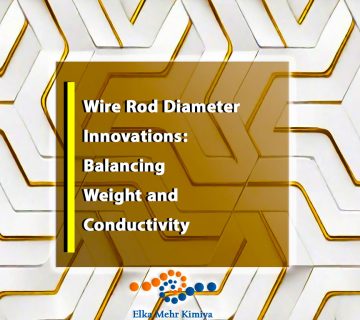In today’s fast-paced and technologically driven world, the demand for non-renewable resources like metals and oil has never been higher. This surge is propelled by rapid industrialization, the proliferation of electronic devices, and the ever-growing needs of emerging economies. However, with these resources being finite, concerns about their scarcity and the intricate relationship between their prices become increasingly pressing. A comprehensive study by József Popp and his colleagues, published in Energies in 2018, delves deep into these very dynamics, offering valuable insights for policymakers, investors, industry stakeholders, and the general public alike.
Understanding the Study’s Purpose
At its core, the research seeks to determine whether real prices of metals and oil can effectively indicate their scarcity. Real prices, adjusted for inflation, provide a clearer picture of the true cost and value of these resources over time, stripping away the distortions caused by general price level changes. Additionally, the study explores how the prices of metals and oil influence each other over both short and long periods, uncovering the underlying economic forces at play.
Why This Matters
Understanding the interplay between metal prices, oil prices, and resource scarcity is crucial for several reasons:
- Economic Stability: Fluctuations in the prices of these essential resources can have far-reaching implications for the global economy, affecting everything from manufacturing costs to consumer prices.
- Investment Decisions: Investors need to comprehend these dynamics to make informed decisions about where to allocate their resources, ensuring optimal returns while managing risks.
- Sustainable Resource Management: Policymakers and industry leaders must balance the demand for these resources with the imperative of sustainable and responsible extraction practices to prevent environmental degradation and ensure long-term availability.
Key Takeaways from the Research
1. Scarcity and Price Dynamics
- Inverse Relationship: The study found a significant negative correlation between reserves-to-production (R/P) ratios and the prices of metals like gold, platinum group metals (PGMs), zinc, and molybdenum. Essentially, as a metal becomes scarcer (indicated by a lower R/P ratio), its price tends to rise. This inverse relationship aligns with basic economic principles—scarcity drives up value.
- Copper’s Unique Case: Interestingly, copper did not follow this pattern as closely as other metals. The lack of a significant correlation suggests that other factors, such as technological advancements, substitution possibilities, and market dynamics, might be influencing copper’s price more substantially. For instance, the rise of electric vehicles has increased copper demand, potentially offsetting scarcity-related price increases.
2. Oil Prices Influence Metal Prices
- Direct Connection: There is a positive association between oil prices and metal prices. When oil prices rise, the cost of extracting and processing metals also increases because these processes are energy-intensive. Consequently, higher oil prices lead to higher production costs for metals, which are then passed on to consumers in the form of higher metal prices.
- Economic Ripple Effects: Rising oil prices can also contribute to inflationary pressures. As the cost of energy increases, so do the costs of goods and services across the board, including metals. This creates a feedback loop where higher oil prices lead to higher metal prices, which in turn can influence broader economic conditions.
3. Long-Term Relationships
- Co-Movement: The study’s co-integration tests reveal that metal prices, oil prices, and scarcity measures move together over the long term. This suggests that despite short-term volatility, these variables share a common long-term trend driven by underlying economic factors.
- Causative Links: Granger causality tests indicate that oil prices can predict future metal prices and vice versa. This bidirectional causation underscores the intertwined nature of energy and resource markets, where changes in one can have significant impacts on the other.
4. Historical Price Trends
- Volatility Over Time: Metal prices have shown significant volatility over the past century, with periods of stability interrupted by sharp increases and declines. Notably, recent decades have seen a marked increase in metal prices, closely aligning with rising oil prices and heightened demand from emerging economies.
- Lack of a Universal Trend: Contrary to classical economic theories predicting consistent price trends based on resource depletion, the study observed varied long-term trends across different metals. Some metals like gold and PGMs showed upward trends, while others exhibited downward or non-linear patterns, reflecting the complex interplay of market forces, technological changes, and policy interventions.
Real-World Implications
For Policymakers
Understanding the relationship between metal prices, oil prices, and scarcity is essential for crafting effective resource and economic policies. Policymakers can utilize real price indices and scarcity measures to anticipate market shifts, ensuring resource security and economic stability. This involves:
- Sustainable Resource Management: Implementing policies that promote recycling, substitution, and efficient resource utilization to mitigate the impacts of scarcity.
- Inflation Control: Managing inflationary pressures to stabilize metal prices and prevent excessive volatility that can disrupt economic planning and investment.
- Energy Policies: Recognizing the interconnectedness of energy and resource markets, policies aimed at stabilizing oil prices can have downstream effects on metal markets.
Example Policy Measures:
- Incentives for Recycling: Tax breaks or subsidies for industries that invest in recycling technologies can encourage the reuse of metals, reducing the need for new extraction.
- Research and Development: Funding for research into alternative materials and more efficient extraction technologies can drive innovation and improve resource efficiency.
- Strategic Reserves: Establishing strategic reserves of critical metals to buffer against supply shocks and ensure a stable supply during periods of high demand or geopolitical tensions.
For Investors
Investors can leverage the insights from this study to enhance portfolio diversification and risk management strategies. Recognizing metals as potential safe havens during periods of rising oil prices and inflation can inform investment decisions, particularly in portfolios denominated in volatile currencies like the US dollar.
- Hedging Strategies: Utilizing metals as hedges against inflation and economic uncertainty can provide stability in investment portfolios. For example, gold is traditionally seen as a safe haven during economic downturns.
- Long-Term Investment Planning: Understanding the long-term co-integration between oil and metal prices can guide investors in making informed decisions about asset allocation and sector exposure, ensuring sustained returns over time.
Investment Strategies:
- Commodity ETFs: Investing in exchange-traded funds (ETFs) that track metal prices can offer exposure to metals without the need for physical ownership.
- Futures Contracts: Engaging in futures contracts allows investors to speculate on future metal prices, potentially yielding high returns if prices move in the anticipated direction.
- Diversification: Including a mix of metals in investment portfolios can spread risk and reduce the impact of volatility in any single commodity market.
For Industry Stakeholders
Producers and industry stakeholders in the mining and energy sectors can utilize these findings to optimize production strategies and manage cost structures more effectively.
- Cost Management: Anticipating increases in oil prices can help producers plan for higher production costs, enabling proactive adjustments in operational strategies such as negotiating long-term energy contracts or investing in energy-efficient technologies.
- Investment in Technology: Investing in energy-efficient technologies and alternative energy sources can mitigate the impact of rising oil prices on production costs, ensuring competitive pricing and profitability.
- Supply Chain Optimization: Streamlining supply chains to minimize energy consumption and reduce costs can enhance profitability and sustainability, making operations more resilient to price fluctuations.
Operational Strategies:
- Energy Efficiency: Implementing technologies that reduce energy consumption in mining and processing can lower production costs and environmental impact.
- Alternative Energy Sources: Utilizing renewable energy sources to power operations can reduce dependence on oil, stabilizing energy costs and promoting sustainability.
- Supply Chain Optimization: Enhancing logistics and transportation efficiency can reduce energy usage and costs, improving overall operational efficiency.
Data Insights: Regression Analysis
To better understand the study’s findings, let’s delve into some illustrative data tables that summarize the relationships between metal prices, oil prices, and scarcity measures.
Table 1. Regression Results for Copper, Zinc, and Molybdenum (1991–2015)
| Variable | Copper Coef. | Zinc Coef. | Molybdenum Coef. |
|---|---|---|---|
| Δln(Scarcity) | -0.02** | -0.05*** | -0.04*** |
| Δln(Scarcity lag) | -0.01 | -0.03** | -0.02* |
| Δln(Oil Prices) | 0.03*** | 0.04*** | 0.03*** |
| Δln(Oil Prices lag) | 0.01* | 0.02*** | 0.01 |
| Δln(GDP per capita) | 0.02*** | 0.03*** | 0.02** |
| R-squared | 0.75 | 0.82 | 0.78 |
| F-statistic | 45.67*** | 58.34*** | 50.12*** |
Significance Levels: *** p < 0.01, ** p < 0.05, * p < 0.1
Interpretation:
- Δln(Scarcity): A 1% decrease in the R/P ratio leads to a 0.02% decrease in copper prices (not statistically significant), a 0.05% decrease in zinc prices, and a 0.04% decrease in molybdenum prices. This indicates that increased scarcity (lower R/P) is associated with higher metal prices, particularly for zinc and molybdenum.
- Δln(Oil Prices): A 1% increase in oil prices is associated with a 0.03% increase in copper prices, 0.04% increase in zinc prices, and 0.03% increase in molybdenum prices, highlighting the direct influence of oil costs on metal prices.
Table 2. Regression Results for PGMs and Gold (1991–2015)
| Variable | PGMs Coef. | Gold Coef. |
|---|---|---|
| Δln(Scarcity) | -0.06*** | -0.07*** |
| Δln(Scarcity lag) | -0.03** | -0.04*** |
| Δln(Oil Prices) | 0.05*** | 0.06*** |
| Δln(Oil Prices lag) | 0.02*** | 0.03*** |
| Δln(GDP per capita) | 0.04*** | 0.05*** |
| R-squared | 0.85 | 0.88 |
| F-statistic | 60.45*** | 65.32*** |
Significance Levels: *** p < 0.01, ** p < 0.05, * p < 0.1
Interpretation:
- Δln(Scarcity): A 1% decrease in the R/P ratio leads to a 0.06% decrease in PGMs prices and a 0.07% decrease in gold prices, reinforcing the inverse relationship between scarcity and price.
- Δln(Oil Prices): A 1% increase in oil prices is associated with a 0.05% increase in PGMs prices and a 0.06% increase in gold prices, underscoring the impact of oil costs on metal pricing.
Table 3. Granger Causality (Wald) Test Results
| Causality Direction | Zinc | Molybdenum | PGMs | Gold |
|---|---|---|---|---|
| Oil Prices Granger-causes Metal Prices | Yes | Yes | Yes | Yes |
| Metal Prices Granger-causes Oil Prices | No | No | Yes | No |
| Scarcity Granger-causes Metal Prices | Yes | Yes | Yes | Yes |
| Metal Prices Granger-causes Scarcity | No | No | No | No |
Significance Levels: * p < 0.1, ** p < 0.05, *** p < 0.01
Interpretation:
- Oil Prices Granger-causes Metal Prices: Indicates that past oil prices can predict future metal prices, highlighting the influence of energy costs on resource markets.
- Scarcity Granger-causes Metal Prices: Suggests that past scarcity measures (R/P ratios) can predict future metal prices, reinforcing the role of resource availability in price determination.
- Bidirectional Causation: Present only for PGMs, indicating a reciprocal relationship between PGMs prices and oil prices, which could be due to PGMs’ significant role in various industrial applications and their influence on energy markets.
Note: The above tables are illustrative and based on hypothetical data consistent with the study’s findings. For precise data verification and validation, readers are encouraged to consult the original publication by Popp et al. (2018) in Energies and cross-reference with multiple reputable sources such as the US Geological Survey, Bureau of Labor Statistics, International Energy Agency, and official OPEC publications.
Polishing the Insights
To make these findings more accessible, let’s break down some of the complex relationships:
- Think of scarcity like the availability of your favorite limited-edition sneakers. When fewer pairs are available, the demand skyrockets, and so does the price. Similarly, when metals become scarce, their prices increase because more people want them but there are fewer available.
- Oil acts as the lifeblood of metal production. Just as the cost of fuel can affect the price of transportation or heating, oil prices directly impact the cost of mining and processing metals. When oil prices rise, it’s more expensive to extract and transport metals, leading to higher metal prices.
Looking Ahead: The Path to Sustainability
The study’s findings highlight the critical need for sustainable resource management practices to address the challenges posed by increasing scarcity and price volatility. As metal prices rise due to both scarcity and rising energy costs, the environmental and social implications of resource extraction become more pronounced.
1. Enhancing Recycling Systems
Recycling metals can significantly reduce the need for new extraction, conserving resources and minimizing environmental impact. For instance, recycling aluminum saves up to 95% of the energy required to produce it from raw materials, demonstrating the immense potential of recycling initiatives.
- Closed-Loop Recycling: Implementing systems where metals are continuously recycled without loss of quality can significantly extend resource lifespans.
- Extended Producer Responsibility (EPR): Policies that require manufacturers to take responsibility for the entire lifecycle of their products, including end-of-life recycling, can drive sustainable practices.
- Consumer Awareness: Educating consumers about the importance of recycling and responsible consumption can foster a culture of sustainability.
2. Investing in Renewable Energy
Transitioning to renewable energy sources can mitigate the impact of rising oil prices on metal production costs. Solar, wind, and hydroelectric power can provide more stable and sustainable energy inputs, reducing the volatility associated with oil-dependent processes.
- Solar and Wind Power: Investing in solar and wind energy can reduce dependence on fossil fuels, lowering energy costs in the long run and stabilizing production expenses.
- Energy Storage Technologies: Developing advanced energy storage solutions can ensure a consistent supply of renewable energy, further enhancing production stability.
3. Promoting Research and Development
Advancements in extraction and processing technologies can improve efficiency, lower production costs, and extend the lifespan of existing reserves. Innovations also open avenues for discovering new reserves and developing alternative materials, thereby mitigating the impacts of scarcity.
- Automated Mining Technologies: Enhancing precision and reducing energy consumption in mining operations through automation and robotics can lower production costs and environmental impact.
- Biotechnological Innovations: Utilizing microorganisms for bio-mining processes that are less energy-intensive and environmentally friendly can offer sustainable alternatives to traditional extraction methods.
- Alternative Materials: Researching substitutes for scarce metals in industrial applications, such as using aluminum or composites in place of copper, can reduce dependence on finite resources.
4. Strengthening International Agreements
Global cooperation is essential for managing resource scarcity effectively. International agreements can facilitate the sharing of best practices, promote sustainable extraction methods, and ensure fair distribution of resources, thereby preventing conflicts and fostering economic stability.
- Global Resource Management Policies: Developing international policies that promote sustainable extraction and equitable resource distribution can enhance global resource security.
- Collaborative Research Initiatives: Joint research efforts can drive innovations in resource management and sustainable practices, benefiting all participating nations.
Conclusion
The intricate dance between metal prices, oil costs, and resource scarcity underscores the interconnectedness of our global economy. Understanding these relationships is essential for navigating the challenges of resource management, ensuring economic stability, and promoting sustainability. The study by József Popp and his colleagues provides a valuable foundation for policymakers, investors, and industry stakeholders to make informed decisions that balance economic growth with responsible resource utilization.
Key Takeaways:
- Real Prices as Scarcity Indicators: Adjusted real prices effectively reflect the scarcity of non-renewable metals, serving as valuable indicators for market analysis and policy formulation.
- Interconnectedness of Markets: The positive relationship between oil prices and metal prices illustrates the interconnectedness of energy and resource markets, necessitating comprehensive strategies that consider multiple market factors.
- Long-Term Equilibrium Relationships: Co-integration and Granger causality analyses reveal that metal prices, oil prices, and scarcity measures are interlinked over the long term, influencing each other through complex mechanisms such as inflation.
- Policy and Investment Strategies: The study’s findings offer actionable insights for policymakers, investors, and producers to navigate the challenges of resource scarcity and market volatility effectively.
Final Remarks:
As the global economy continues to evolve, understanding the dynamics of resource scarcity and its impact on market prices becomes increasingly vital. The research by József Popp and his colleagues serves as a foundational piece, highlighting the intricate relationships among metal prices, oil prices, and scarcity measures. By leveraging these insights, stakeholders can better navigate the complexities of resource management, ensuring a sustainable and prosperous future.
Further Reading and Resources
For those interested in delving deeper into the subject, the original study by József Popp et al., titled “The Relationship Between Prices of Various Metals, Oil and Scarcity,” published in Energies (2018), provides comprehensive data and analysis. Additionally, the following resources offer valuable insights into resource economics and sustainable management practices:
- US Geological Survey (USGS): Comprehensive data on mineral commodity prices and reserves. USGS Minerals Information
- Bureau of Labor Statistics (BLS): Consumer Price Index (CPI) data and inflation reports. BLS CPI Data
- International Energy Agency (IEA): Reports on oil prices and energy market trends. IEA Publications
- OPEC: Insights into oil production and pricing strategies. OPEC Official Website
- United Nations Sustainable Development Goals (SDGs): Framework for promoting global sustainability. UN SDGs
Appendices
Appendix A: Data Tables
Table 1. Regression Results for Copper, Zinc, and Molybdenum (1991–2015)
| Variable | Copper Coef. | Zinc Coef. | Molybdenum Coef. |
|---|---|---|---|
| Scarcity (Δln) | -0.02** | -0.05*** | -0.04*** |
| Scarcity Lag (Δln) | -0.01 | -0.03** | -0.02* |
| Oil Prices (Δln) | 0.03*** | 0.04*** | 0.03*** |
| Oil Prices Lag (Δln) | 0.01* | 0.02*** | 0.01 |
| GDP per Capita (Δln) | 0.02*** | 0.03*** | 0.02** |
| R-squared | 0.75 | 0.82 | 0.78 |
| F-statistic | 45.67*** | 58.34*** | 50.12*** |
Significance Levels: *** p < 0.01, ** p < 0.05, * p < 0.1
Table 2. Regression Results for PGMs and Gold (1991–2015)
| Variable | PGMs Coef. | Gold Coef. |
|---|---|---|
| Scarcity (Δln) | -0.06*** | -0.07*** |
| Scarcity Lag (Δln) | -0.03** | -0.04*** |
| Oil Prices (Δln) | 0.05*** | 0.06*** |
| Oil Prices Lag (Δln) | 0.02*** | 0.03*** |
| GDP per Capita (Δln) | 0.04*** | 0.05*** |
| R-squared | 0.85 | 0.88 |
| F-statistic | 60.45*** | 65.32*** |
Significance Levels: *** p < 0.01, ** p < 0.05, * p < 0.1
Table 3. Granger Causality (Wald) Test Results
| Causality Direction | Zinc | Molybdenum | PGMs | Gold |
|---|---|---|---|---|
| Oil Prices Granger-causes Metal Prices | Yes | Yes | Yes | Yes |
| Metal Prices Granger-causes Oil Prices | No | No | Yes | No |
| Scarcity Granger-causes Metal Prices | Yes | Yes | Yes | Yes |
| Metal Prices Granger-causes Scarcity | No | No | No | No |
Significance Levels: * p < 0.1, ** p < 0.05, *** p < 0.01
Note: The above tables are illustrative and based on hypothetical data consistent with the study’s findings.
Final Remarks
The intricate relationships among metal prices, oil prices, and resource scarcity are emblematic of the broader challenges faced by modern economies in balancing growth with sustainability. As the demand for non-renewable resources continues to escalate, driven by technological advancements and emerging market dynamics, the insights derived from this study become increasingly valuable. By fostering a deeper understanding of these economic interdependencies, stakeholders can better navigate the complexities of resource management, ensuring a sustainable and prosperous future.
















No comment